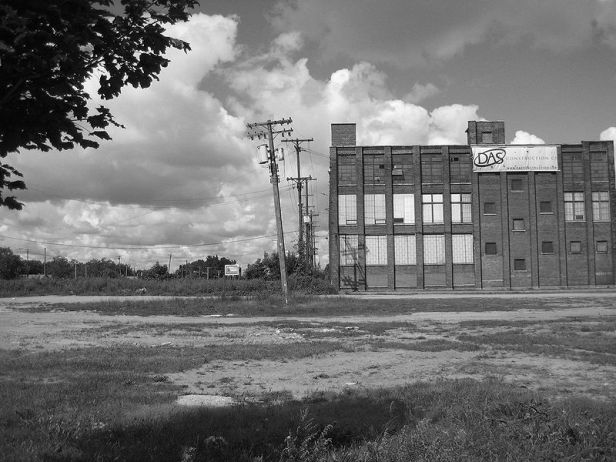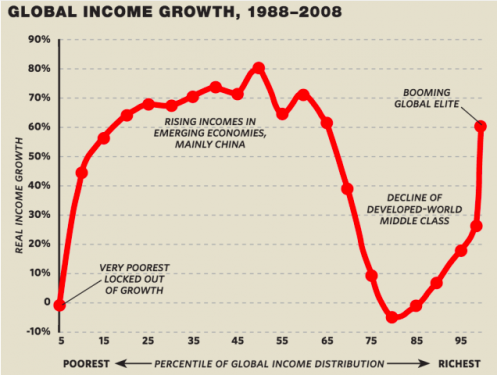
I’ve read too much on the American election and on Trump’s win, and I wanted to pull it together to make sense of it. Having read too much, I’ve now written too much, so my plan is to split this into a couple of posts on the blog and then put the whole thing together as one longer post on Medium. Trump’s win is the kind of surprise that will keep happening in a world where people are expected to be both enthusiastic consumers and low-paid but grateful workers. You can only fill that gap by loading people with debt, but that’s a one-time card that’s already been played.
1. Neoliberalism just died
When both the candidates for the US Presidency are forced to disavow TTIP, the mooted transatlantic trade agreement between the US and the EU, you know the game is up. TTIP has any number of faults, most of which are seen by corporations as features rather than bugs (the binding private tribunals that allow corporations to bypass legal processes, the requirement that markets are opened up to competition even where they don’t currently exist, the ratchet that privileges corporates above political authorities, etc), and it’s been clear for as long as it has been proposed that it’s a last desperate attempt to keep the neoliberal roadshow rolling.
In fact, what we know is that candidates who have been associated with neoliberal policies, and with associated austerity measures, tend these days to lose out to candidates who haven’t. This is not just true in the US. It’s also true in Spain and Greece, and in the UK’s Brexit referendum. Among all the handwringing about the Democrats’ political strategy, running a woman associated so closely with the current broken economic model was probably an elementary mistake.
2. Long run theories of change explain this best
The long-run theories have more persuasive power to me than the shorter-run ones. Any number of commentators, from radical writers such as Wolfgang Streeck to mainstream social democrats like John Kay, have linked the current political crisis to the long economic cycle that runs back to the 1970s, when the post-war settlement between capital and labour was pulled apart by capital, desperate to inflate their returns. We know that story pretty well: squeezed incomes, privatisation and financialisation to create new markets, the export of risk and debt to communities and to individuals.
But others take it back further. Sara Robinson connected it back to the 80-year cycle of Strauss and Howe. On that model, this is the end of the cycle that started with the New Deal in the mid-30s.
Or you can take a longer view, and look at Peter Turchin’s secular cycles model, in which elite competition erupts after real wages are squeezed. Turchin, who started as an evolutionary biologist, models social change. In a paper written a few years ago, he concluded that the United States was as close to civil war as it had been in the Antebellum.
Taking a long view, of course, doesn’t make it feel less of a crisis when you’re in the middle of it. In a fine piece which I’ll come back to here, Dougald Hine observed that,
It turns out you can spend the best part of a decade talking “collapsonomics”,writing about the dark shapes ahead and the unravelling of the world as we have known it, and still let yourself get lulled into believing the status quo will hold a little longer.
3. Crises are invisible before they erupt
Dougald Hine’s piece is one of the more striking pieces about the election. He is a Brit now living in Sweden, and a founder of the Dark Mountain Project, and maybe that triple distance provides some perspective. He connected the election result to the data of Cate and Deaton on the epidemic of early deaths that has afflicted America’s low income men. The numbers compare with the deaths from AIDS—but with far less noise or anger, or campaigning—and also with the pattern of deaths in Russia after the social and economic collapse of the Soviet Union.
Among middle-aged white Americans, it is those who left education earliest who are doing most of the dying. They are dying of suicides and overdoses, alcohol poisoning and liver disease… In March, after Super Tuesday, the Washington Post plotted the death data against the primary results. In eight out of nine states, they found a correlation: the counties where death rates for middle-aged whites were the highest were the counties where the vote for Trump was the strongest.
Trump’s election numbers don’t correlate with unemployment numbers, but the do correlate with prospects. Jed Kolko on FiveThirtyEight looked at them through the county level data for economic risk, based on the level of threat to jobs from automation (I’ll leave to one side the reliability of such forecasts for the moment; what matters for this purpose is the relative numbers.) As Kolko notes, “Economic anxiety is about the future, not just the present. Trump beat Clinton in counties where more jobs are at risk because of technology or globalization.”
The vote switches in the four states were spectacular. On the LSE blog, Michael McQuarrie noted the scale of the swings.
Take Macomb County and Oakland County in Michigan. Macomb County is mostly white and has a median household income of around $53,000. It is not particularly poor, but also not affluent… It voted for Obama twice (+9 in 2008, +4 in 2012). Trump won Macomb by nine points… In contrast, we have neighboring Oakland County, which is considerably more affluent (median income of $66,000), has a university, and has more of a New Economy, advanced manufacturing economic base. It is more diverse as well… Oakland was +8 Democrat in 2012 and +8 in 2016.
We also know that the white working class broke decisively for Trump late on. R. W. Johnson recorded at the London Review of Books that,
The Fox News polls show the gathering landslide among white men with only high school education. With two weeks to go they favoured Trump by 48 to 32 (+16), with one week to go by 53 to 32 (+21) and on election day by 61 to 20, a crushing 41-point margin which swung the Rust Belt states to Trump.
It is also worth noting that although the “Rust belt strategy” now looks brilliant, even inevitable, in peeling solid Democrat states away from the Democrats, it didn’t seem like that at the time. A year previously, also on the LSE blog, Michael McQuarrie had explained why it wouldn’t work. Among the few people to take it seriously as a strategy were the left-leaning Democrats Michael Moore and Thomas Frank, who happen to live in the area.
4. Class is slippery
The data seems to suggest that it wasn’t the white working class that swung it for Trump (at least in the way the Europeans would understand the term), but the group immediately above them, the skilled and semi-skilled workers whose incomes and status have been dragged down. (This is the same group, broadly, that delivered the 1979 election to Thatcher). I think the single best post on this was by Joan C. Williams at Harvard Business Review.
Progressives have lavished attention on the poor for over a century…. Means-tested programs that help the poor but exclude the middle may keep costs and tax rates lower, but they are a recipe for class conflict. Example: 28.3% of poor families receive child-care subsidies, which are largely nonexistent for the middle class. So my sister-in-law worked full-time for Head Start, providing free child care for poor women while earning so little that she almost couldn’t pay for her own.
Obamacare, similarly, may have broadened the next of healthcare, but only, it seems, by imposing more cost on the next group up.
There’s a bigger point here though. As Branko Milanovic has observed, in his famous “elephant diagram”, the effect of economic change globally over the past thirty years has been to depress wages of much of the workers of the richer world. It’s not just about the bottom decile or quintile: there’s wage pressure across the bottom 60% of the wage spectrum, as Benedict Dellot noted at the RSA blog.

In turn that means that the income differential between the unskilled and partly-skilled or skilled worker gets flattened, which means that there’s more resentment about measures designed to help the poorest. The notion of the ‘welfare queen’ may have been largely an invention of the Reagan Republicans, but that notion of the undeserving poor (and the threadbare worker) gains currency when the rewards for more skilled work vanish.
The image at the top of this post is by Theodore Ferringer. It was published by him on flickr under a Creative Commons licence, and is used here with thanks.